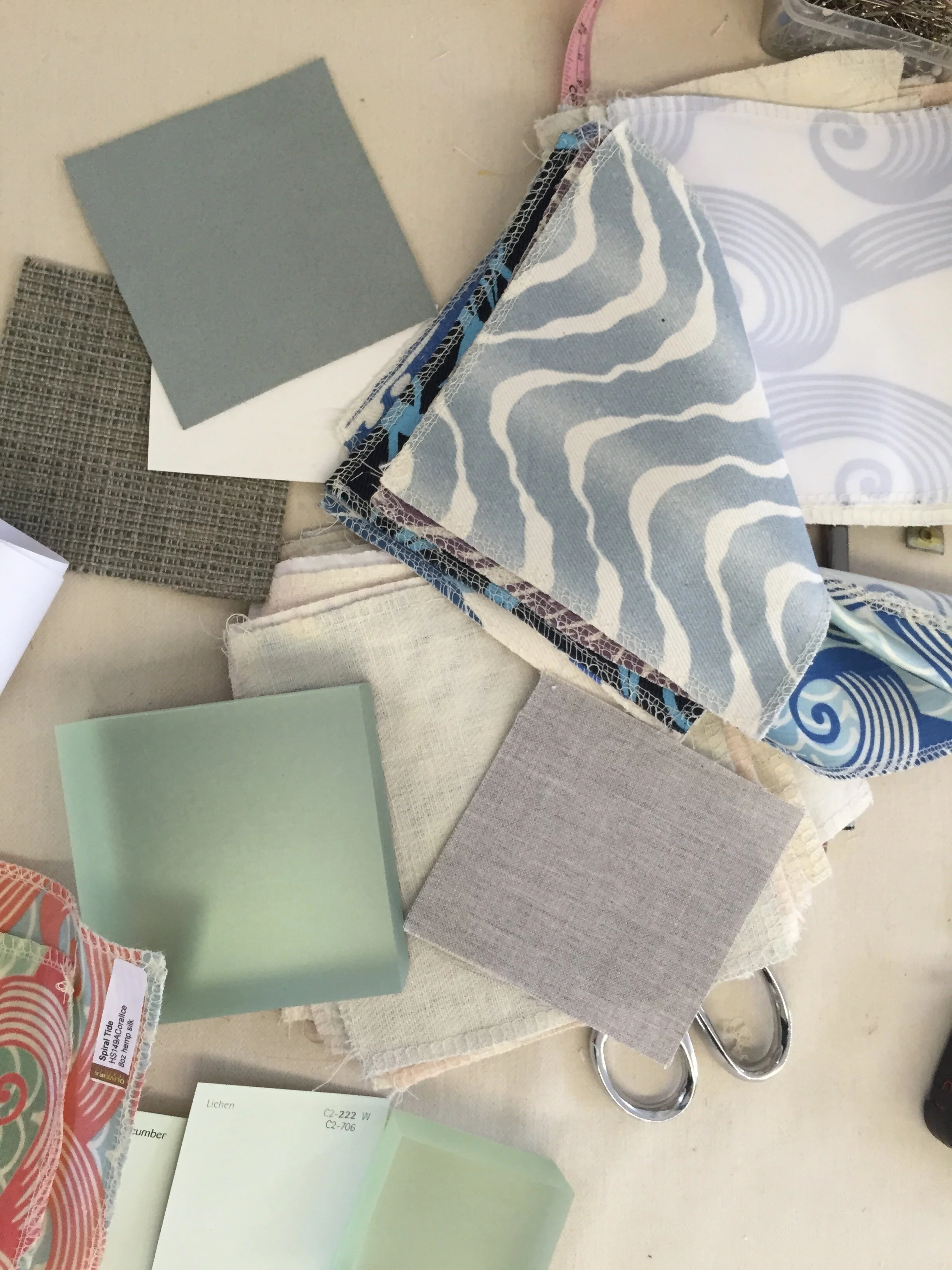This with That: Dormers: Season 1 Episode 7
Katie and Dawn re-visit the “This with That” category, focusing on dormers.
These are simple gable (or dog-house) dormers. Each contains one window, which is common in a gable dormer, and each is inset within the primary roof, so the dormers don’t overwhelm the primary roof.
When do you use what type of dormer with what type of house/footprint? And what type of interior pattern or surface treatment makes sense with what type of dormer? In this episode, Katie and Dawn address such questions, and more.
Katie starts by sharing a definition of a dormer from A Visual Dictionary of Architecture by Francis D.K. Ching. Incorporating a dormer into a primary roof can add habitable floor space — because it increases headroom — and invite daylight and ventilation, thanks to the inclusion of a window or windows. Katie introduces three dormer types to discuss today: gable, shed, and Nantucket dormers. A gable dormer has a roof that slopes down in two directions, like in the photo above. Gable dormers typically contain one or two windows and create smallish, intimate interior spaces that lend themselves well to coziness. Katie and Dawn found several examples of gable dormer interiors that, though small, were big in personality and pattern. Like this one, this one, and this one, which is dormerlike (if not an actual dormer). Gable dormers can work particularly well on a house with a squarish or blocky footprint. You’ll want to be sure to nest dormers within the roof, and, if you include more than one gable dormer, allow ample space between them, so they don’t crowd each other and are clearly subordinate to the primary roof.
A shed dormer, like this one on the back of the Touisset Small House Renovation/Addition by Katie Hutchison Studio, can accommodate multiple windows.
Shed dormers, because they can be longer, can add a fair amount of continuous habitable space, especially when compared with gable dormers. Shed dormers can suite a house with a squarish or boxy footprint, but lend themselves particularly well to houses with longer footprints or wings. A poorly conceived shed dormer can run the risk of becoming a greedy dormer — one that runs the full width of a house, or nearly the full width, overwhelming the primary roof. In the example above, the shed dormer is fully nested within the primary roof which amply surrounds it, so the dormer remains appropriately subordinate to the primary roof. A continuous shed dormer with multiple windows can lend itself to a variety of interior treatments, though still intimate it’s less so than a gable dormer or a shed dormer containing only one window.
A Nantucket dormer, like the dormer in the photo below, is a combination of gable dormers and a shed dormer. It’s typically comprised of a gable dormer on either end of a slightly recessed shed dormer. This can be an effective way to gain considerable continuous headroom in a dormer without creating an overly long, monotonous dormer that might otherwise run the risk of looking a bit greedy.
This is an example of a Nantucket dormer (with a widow’s walk above it).
Katie and Dawn very briefly discuss an inverted shed dormer, which is a more contemporary dormer type that you might see on ranch-style house, or single-story house. In an inverted shed dormer, the dormer roof slopes up from the primary roof rather than down from it, so this type of dormer can add a generous cathedral ceiling and can accommodate taller windows due to the height of the dormer wall it creates.
That’s an inverted shed dormer (to the left) on this California ranch.
Dormers, no matter which type, when added to a primary roof that has windows in both end walls can add light from another direction and cross ventilation. Katie refers to A Pattern Language by Christopher Alexander and the pattern titled “Light on Two Sides of Every Room” as one of the other benefits of incorporating dormers in the design of your house.











